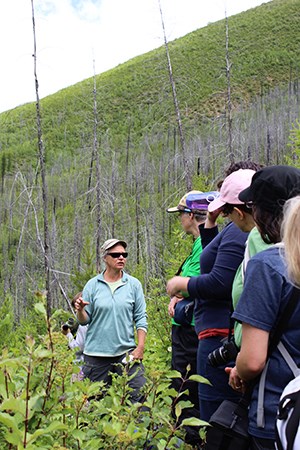
NPS Fire can be a powerful force of change that impacts a forest in surprisingly beneficial ways. It also poses a particular challenge to park managers, whose goal is to maintain natural systems while protecting humans, cultural and historic resources and park infrastructure. Glacier's cultural resources chronicle the evolving history of human activities, interactions, and experiences in the American West, that reveal changes in societal attitudes about land and its uses. Grades: 4–5
National and State Science Standards:
4- LS1-1 Construct an argument that plants and animals have internal and external structures that function to support survival, growth, behavior, and reproduction. 4- ESS2-2 Analyze and interpret data from maps as evidence to make a claim about patterns of Earth's features. 5-LS2-1 Develop and critique a model to describe the movement of matter among plants, animals, decomposers, and the environment. 5-ESS3-1 Obtain and combine information from various sources about ways individual communities use science ideas to protect the Earth's resources, environment, and systems and describe examples of how American Indians use scientific knowledge and practices to maintain relationships with the natural world. ObjectivesStudents will be able to:
Field Trip LogisticsTeachers wishing to have their students participate in the fire ecology field trip should plan to arrive in the park by 9:30 - 10 am and stay until 1:30 - 2 pm. Everyone must be prepared to be outside all day and ready to hike 2 miles on some uneven terrain. Reserve Your TripVisit the Scheduling & Guidelines page to find the reservation form as well as tips for a successful day in the park. If you have questions, email or call the Apgar Education Office at 406-888-7899. Preparing for Your TripStudents that spend time preparing for their visit get more out of a field trip to the park. Activities post-visit also help to reinforce information learned during the trip. Once registered, we will email you a complete curriculum guide, including the following lessons:
Suggested activities and supplementary materials:
|
Last updated: April 29, 2025
